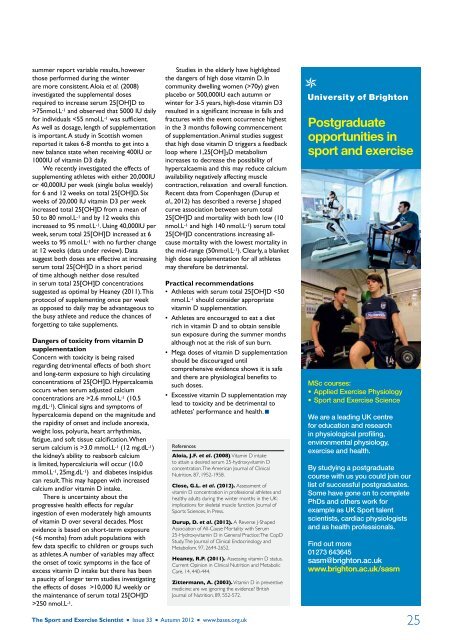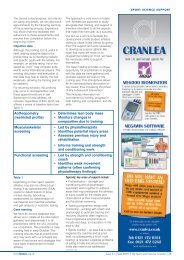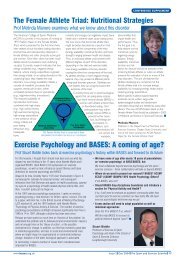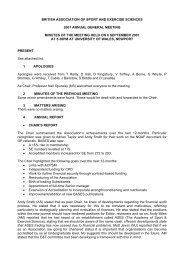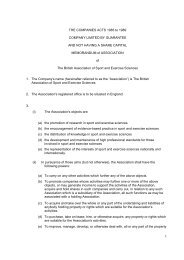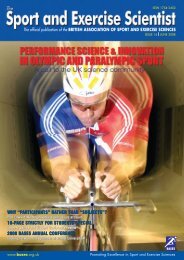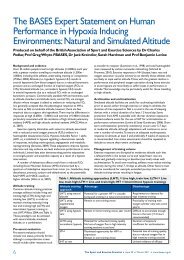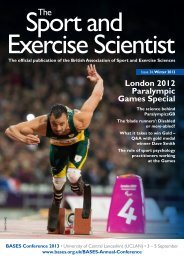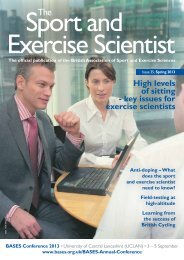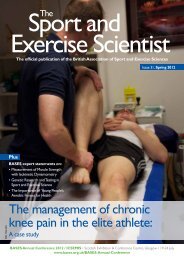Issue 33 Autumn 2012 - Bases
Issue 33 Autumn 2012 - Bases
Issue 33 Autumn 2012 - Bases
- No tags were found...
Create successful ePaper yourself
Turn your PDF publications into a flip-book with our unique Google optimized e-Paper software.
summer report variable results, howeverthose performed during the winterare more consistent. Aloia et al. (2008)investigated the supplemental dosesrequired to increase serum 25[OH]D to>75nmol.L -1 and observed that 5000 IU dailyfor individuals 2.6 mmol.L -1 (10.5mg.dL -1 ). Clinical signs and symptoms ofhypercalcemia depend on the magnitude andthe rapidity of onset and include anorexia,weight loss, polyuria, heart arrhythmias,fatigue, and soft tissue calcification. Whenserum calcium is >3.0 mmol.L -1 (12 mg.dL -1 )the kidney’s ability to reabsorb calciumis limited, hypercalciuria will occur (10.0mmol.L -1 , 25mg.dL -1 ) and diabetes insipiduscan result. This may happen with increasedcalcium and/or vitamin D intake.There is uncertainty about theprogressive health effects for regularingestion of even moderately high amountsof vitamin D over several decades. Mostevidence is based on short-term exposure(10,000 IU weekly orthe maintenance of serum total 25[OH]D>250 nmol.L -1 .Studies in the elderly have highlightedthe dangers of high dose vitamin D. Incommunity dwelling women (>70y) givenplacebo or 500,000IU each autumn orwinter for 3-5 years, high-dose vitamin D3resulted in a significant increase in falls andfractures with the event occurrence highestin the 3 months following commencementof supplementation. Animal studies suggestthat high dose vitamin D triggers a feedbackloop where 1,25[OH] 2 D metabolismincreases to decrease the possibility ofhypercalcaemia and this may reduce calciumavailability negatively affecting musclecontraction, relaxation and overall function.Recent data from Copenhagen (Durup etal., <strong>2012</strong>) has described a reverse J shapedcurve association between serum total25[OH]D and mortality with both low (10nmol.L -1 and high 140 nmol.L -1 ) serum total25[OH]D concentrations increasing allcausemortality with the lowest mortality inthe mid-range (50nmol.L -1 ). Clearly, a blankethigh dose supplementation for all athletesmay therefore be detrimental.Practical recommendations• Athletes with serum total 25[OH]D


